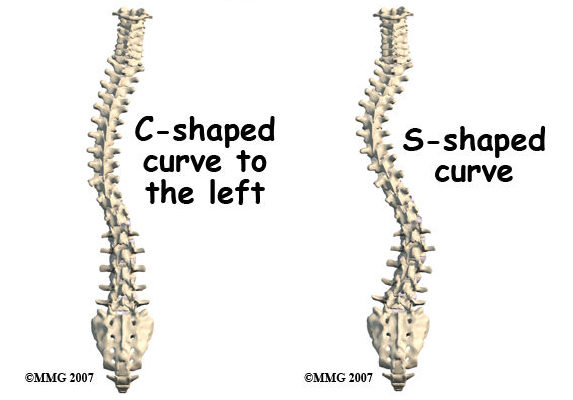Rheumatoid arthritis (RA) is an autoimmune disease that primarily affects the joints. It occurs when the immune system mistakenly attacks the body’s own tissues, causing chronic inflammation in the joints. This inflammation can lead to pain, stiffness, and swelling, and over time, it may result in joint deformities and damage. Approximately 1.3 million Americans are living with rheumatoid arthritis, with a higher prevalence in women and typically developing between the ages of 30 and 60 (Fondation de l'arthrite).

What is Rheumatoid Arthritis Scoliosis?
Scoliosis is a condition characterized by an abnormal curvature of the spine, often resembling an “S” or “C” shape rather than a straight line. This curvature can cause visible unevenness in the shoulders, hips, and waist. Scoliosis affects approximately 2-3% of the population, with most cases being idiopathic, meaning the cause is unknown. It is most commonly diagnosed during adolescence, but it can occur at any age (Société de recherche sur la scoliose).

The Link between Rheumatoid Arthritis and Scoliosis
Rheumatoid arthritis can indirectly contribute to the development or worsening of scoliosis. The chronic inflammation associated with RA can weaken the ligaments and muscles supporting the spine, potentially leading to spinal curvature. Joint deformities resulting from RA, such as subluxation or erosion, can also alter spine alignment and contribute to scoliosis (Journal de rhumatologie clinique).
Common Symptoms of Rheumatoid Arthritis and Scoliosis
Symptoms of rheumatoid arthritis include joint pain, stiffness, swelling, and fatigue. These symptoms are typically symmetrical and may lead to joint deformities and loss of function in severe cases (Institut national de l'arthrite et des maladies musculo-squelettiques et cutanées). In scoliosis, symptoms can include an uneven waist or shoulders, a prominent shoulder blade, and back pain, especially if the curvature is severe (Santé de la colonne vertébrale).
Diagnosing Rheumatoid Arthritis and Scoliosis
Diagnosis of rheumatoid arthritis involves a medical history review, physical examination, and diagnostic tests such as blood tests for specific antibodies and imaging studies for joint damage (American College of Rheumatology). For scoliosis, physical examinations and X-rays are used to assess spinal curvature and confirm the diagnosis (Société de recherche sur la scoliose).

Treatment Options for Rheumatoid Arthritis Scoliosis
Treatment for rheumatoid arthritis focuses on reducing inflammation, relieving pain, and slowing joint damage. Common treatments include NSAIDs, DMARDs, and biologic therapies (Fondation de l'arthrite). Scoliosis treatment may involve physical therapy, bracing, or surgery, depending on the severity of the curvature (Fondation nationale de la scoliose).
Medications for Rheumatoid Arthritis Scoliosis
RA medications include NSAIDs and DMARDs to reduce inflammation and manage pain. Biologic therapies may be used in severe cases (American College of Rheumatology). For scoliosis, medications are not typically used as a primary treatment, but pain relievers may be prescribed for associated discomfort (Santé de la colonne vertébrale).
Physical Therapy and Exercise for Rheumatoid Arthritis Scoliosis
Physical therapy is crucial for managing RA and scoliosis. For RA, therapy helps improve joint mobility and reduce pain through exercises and manual techniques (Institut national de l'arthrite et des maladies musculo-squelettiques et cutanées). For scoliosis, therapy aims to improve posture, strengthen spinal-supporting muscles, and increase flexibility (Société de recherche sur la scoliose).
Surgical Interventions for Rheumatoid Arthritis Scoliosis
Severe RA may require joint replacement surgery to relieve pain and restore function (Fondation de l'arthrite). For scoliosis, spinal fusion is commonly performed to correct severe curvature and stabilize the spine (Fondation nationale de la scoliose).
Lifestyle Modifications for Rheumatoid Arthritis Scoliosis
Lifestyle modifications play a significant role in managing both conditions. For RA, maintaining a healthy weight, eating a balanced diet, and avoiding smoking are beneficial (Fondation de l'arthrite). For scoliosis, maintaining good posture, regular exercise, and avoiding heavy lifting are important (Santé de la colonne vertébrale).
Conclusion: Managing Rheumatoid Arthritis and Scoliosis
Understanding the connection between rheumatoid arthritis and scoliosis is essential for effective management. While there is no cure for either condition, various treatments and lifestyle modifications can help alleviate symptoms and improve quality of life. Working closely with healthcare providers ensures a personalized treatment plan and effective management of these conditions (American College of Rheumatology).
Références
- Arthritis Foundation. “What is Rheumatoid Arthritis?” Arthritis Foundation. Accessed August 2024.
- Scoliosis Research Society. “What is Scoliosis?” Scoliosis Research Society. Accessed August 2024.
- Journal of Clinical Rheumatology. “Rheumatoid Arthritis and Scoliosis: A Review.” Accessed August 2024.
- National Institute of Arthritis and Musculoskeletal and Skin Diseases. “Rheumatoid Arthritis.” National Institute of Arthritis and Musculoskeletal and Skin Diseases. Accessed August 2024.
- Spine Health. “Scoliosis Overview.” Spine Health. Accessed August 2024.
- American College of Rheumatology. “RA Diagnosis and Treatment.” American College of Rheumatology. Accessed August 2024.
- National Scoliosis Foundation. “Scoliosis Treatment.” National Scoliosis Foundation. Accessed August 2024.
- National Institute of Arthritis and Musculoskeletal and Skin Diseases. “Physical Therapy for RA.” National Institute of Arthritis and Musculoskeletal and Skin Diseases. Accessed August 2024.
- Scoliosis Research Society. “Physical Therapy for Scoliosis.” Scoliosis Research Society. Accessed August 2024.
- Arthritis Foundation. “RA Treatment Options.” Arthritis Foundation. Accessed August 2024.
- Spine Health. “Scoliosis Treatment.” Spine Health. Accessed August 2024.
- National Scoliosis Foundation. “Scoliosis Surgery.” National Scoliosis Foundation. Accessed August 2024.
- Arthritis Foundation. “Lifestyle Modifications for RA.” Arthritis Foundation. Accessed August 2024.
- Spine Health. “Living with Scoliosis.” Spine Health. Accessed August 2024.
- American College of Rheumatology. “RA Patient Resources.” American College of Rheumatology. Accessed August 2024.

